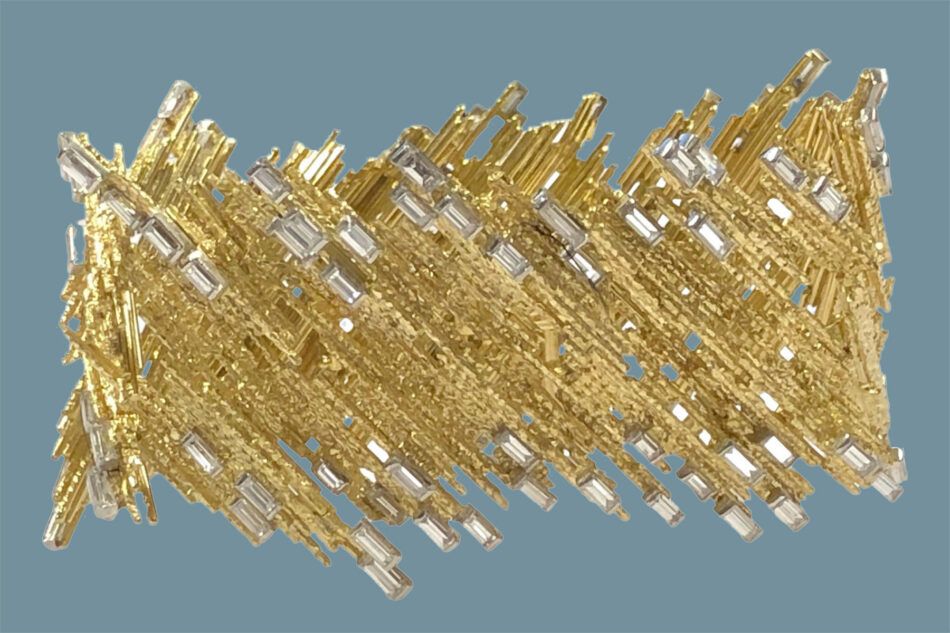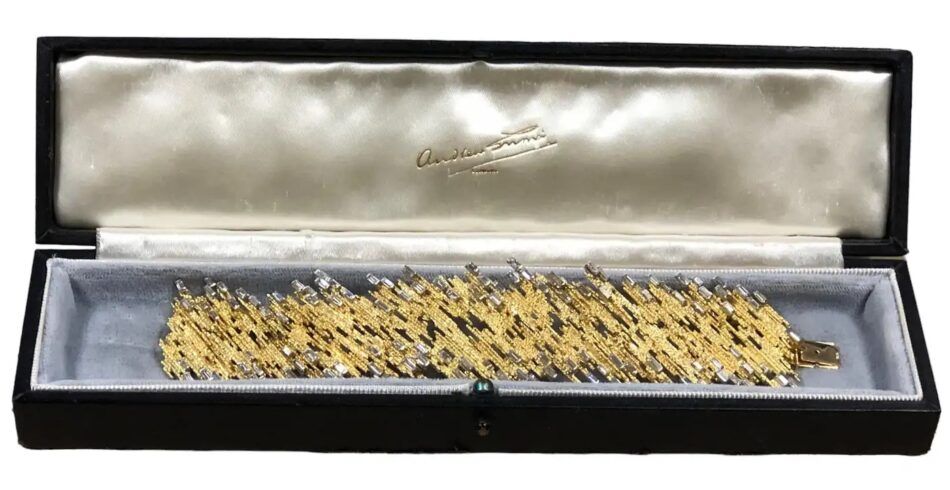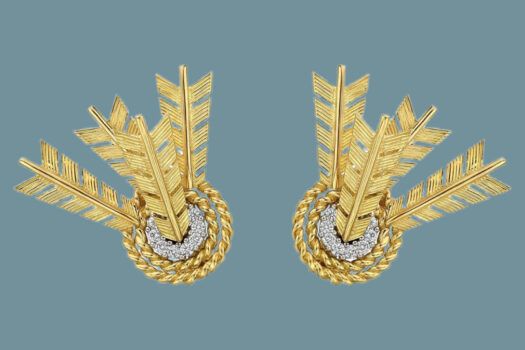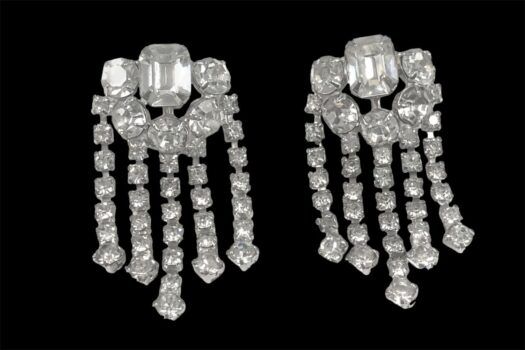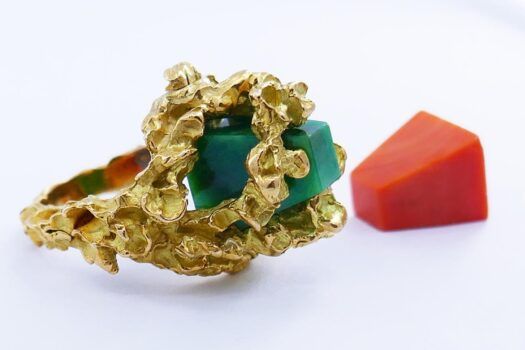Bold, sculptural and futuristic, this 1960s 18-karat-gold diamond-flecked bracelet by Anglo-Italian designer Andrew Grima is a modernist masterwork. The piece is an excellent example of the jeweler’s signature style, with a dynamic and flexible form that hugs the wrist like woven fabric, showcasing a dramatic pattern that evokes an electric current, darting arrows or splintered sunbeams.
Often called the father of modernist jewelry, Grima blazed a glittering trail with imaginative designs that were a marked departure from the previous era’s more ornamental, representational styles.
Born in Rome in 1921 to a Maltese father and an Italian mother, he was brought up in England, where he studied mechanical engineering at university, a discipline that no doubt laid the foundation for a career built on inventive fabrication. He found his way into the creative field of jewelry design while working for his father-in-law’s jewelry firm, H. J. Company.

Grima was captivated by rough-cut semi-precious stones and favored organic, abstract shapes inspired by an avant-garde sensibility. When he inherited the business, in 1952, he became its principal designer, putting into practice his belief that jewelry should be radical, exciting and visually arresting.
In 1961, a selection of his pieces were included in an exhibition at London’s Goldsmiths’ Hall alongside jewelry by noted visual artists Henry Moore, Barbara Hepworth and Elisabeth Frink. His experimental designs captured the zeitgeist. Over the next few years, accolades flowed in, including several De Beers Diamonds-International Awards, the Queen’s Award for Export and the Duke of Edinburgh’s Prize for Elegant Design. In 1966, Grima opened his own atelier. His work was coveted by royals, members of high society and glamorous film stars of the day, including Princess Margaret, Jaqueline Onassis, Sharon Tate and Ursula Andress.
This gold and diamond bracelet, offered on 1stDibs by Chicago-based dealer N. Green and Sons, is one of Grima’s celebrated textured-wire designs. Hand-crafted and hammered for a prismatic ridged effect, the gold filaments have the texture of rough-hewn timber and a taut diagonal arrangement finessed with bright baguette diamonds, reflecting a rebellious and audacious aesthetic to match the radical spirit of the modernist era.
“The bracelet is a true masterpiece, made all the more special by its original Grima-signed presentation box,” says jewelry expert and N. Green proprietor Jeff Cohen. “These boxes were often discarded, as it was common to just fling things in a safe in those days. The piece was purchased in London in the 1960s and remained with its original owner for decades until I acquired it.”
A Grima jewel of this caliber and condition is a rare find, Cohen adds. “Back in the 1980s, when the value of gold was at an all-time high, incredible pieces such as this were considered clunky and too brutalist looking, so they were simply melted down for cash, making this bracelet super collectible.”
Today, Grima pieces like this kinetic design are emblems of a magical time when luxury attained a cutting-edge dimension. “I call it the Fortress of Solitude bracelet, after Superman’s home base,” says Cohen, laughing. “This is a really geeky reference, but if you know the 1978 film, you’ll remember it as a mystical place covered in spear-like icicles jutting from the ground. I’m not sure if Grima had icicles in mind, but this piece has all that epic drama and then some.”
